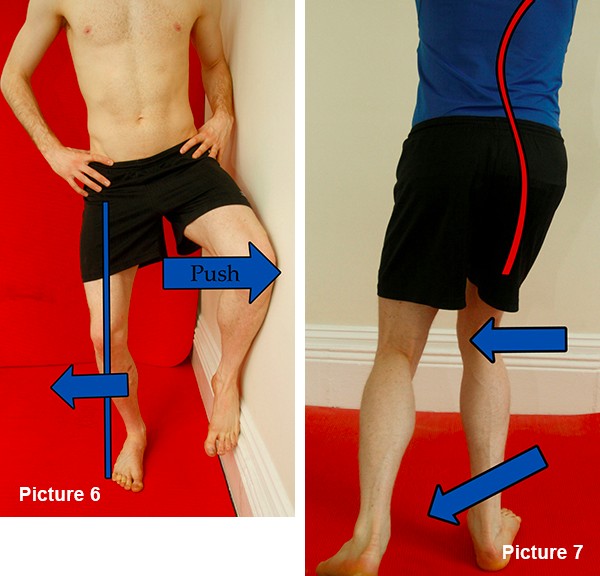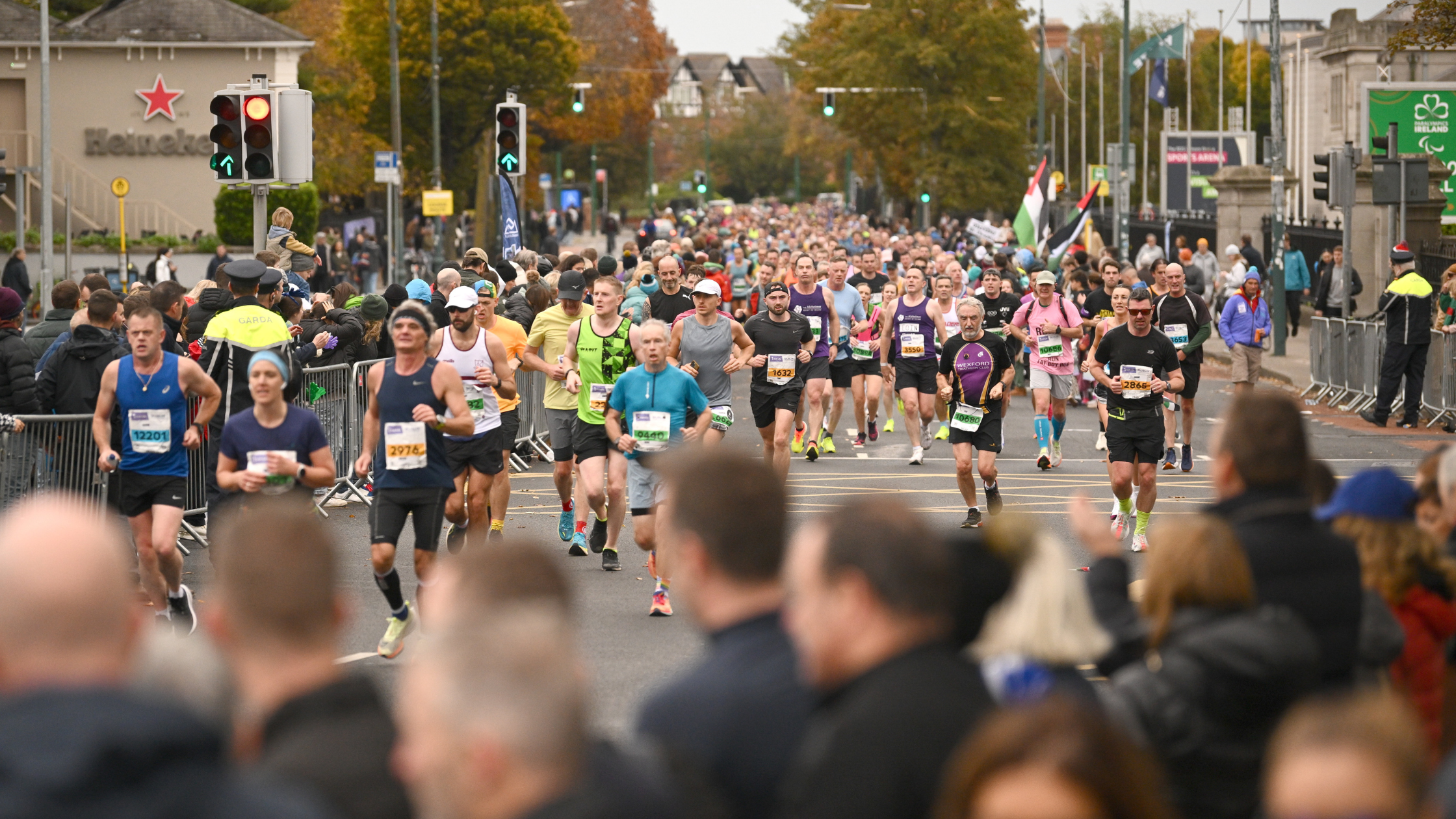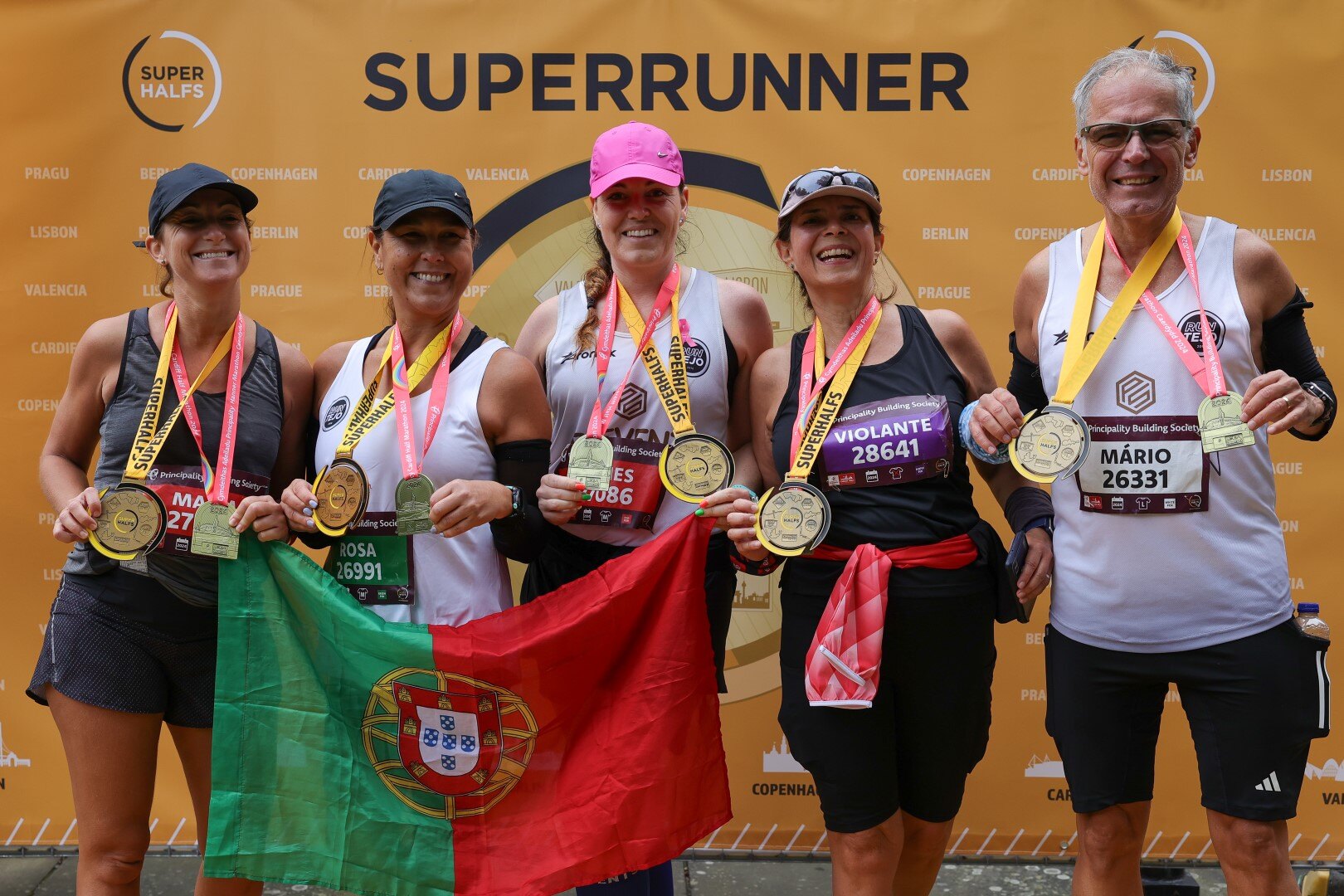This is the fourth of a series of four articles covering the basic lengths and strengths required for running. This then will lead onto how to simply assess your own running style and decide if you are at risk of overloading a particular area and injuring it. As the picture develops the self-help remedial work for all these areas will be discussed so you can start your own rehab.
Methods to decide if you need more detailed professional input and what that should ideally involve will be covered.
Following this there will be a further series of articles looking at specific injuries, the causes, how to help diagnose them yourself and what to try to do about them before enlisting further help.
This series of articles will help you to have a better understanding of why things hurt and some of the simple things you can do. It is not a substitute for a proper assessment from a Chartered Physiotherapist with a good understanding of the runner. If in doubt then seek further advice.
Gluteal strengths
Running requires a lot of strength and control around the hip to absorb impact, control leg position and to drive the body forward. For all of these a huge amount of strength is required. Each step puts 4 to 5 times body weight through the leg due to the effects of momentum. The gluteal muscles are primarily important to this weakness leads to many problems around the back and further down the legs.
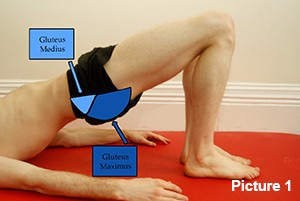
The gluts are made up of 3 different muscles, max, min, and medius.
For the purposes of this article we will concentrate on two of them, medius and maximus (see Picture 1.) Medius is at the side above the hip bone, maximus is at the back – the big one!
Put simply the role of the maximus is to drive you forwards. If it is not strong then you tend to arch your back more which puts stress on your back and leads to pain. This is seen in conjunction with tight hip flexors (front of hip muscles).
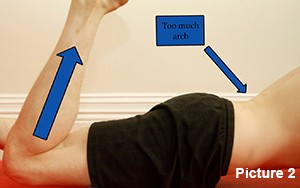
A simple test of glut maximus strength without arching the back is whether you can lay face down and lift the bent knee off of the floor without the back arching (as in Picture 2.)
If you cannot then some strength work whist trying very hard to not arch the back is essential. Start with simple bridging (Picture 3), 3 x 15, 5 second holds.
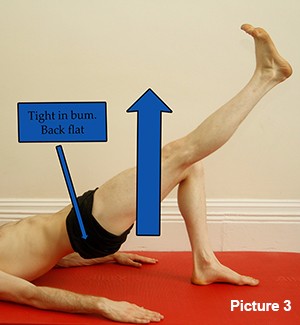
Strength work for the abdominals is important here. When these become easy and well controlled then lunges forward and then driving back off of the forward leg is a good exercise (as in Picture 4) as long as you work hard on keeping the back straight and not arched. 3 x 25 drives off each leg.
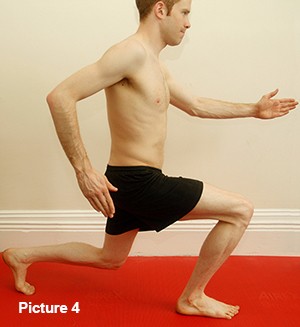
The role of medius is to stabilise the hip and pelvis as you land and to control the hip and knee over the foot. The classic result of weakness is that the knee collapses inwards over the foot (see Picture 7 for an example of poor alignment.) This causes excess pronation and stresses structures through the knee and foot. This leads to lots of problems from knee pain, shin pain, achilles and foot injury. Further from a performance angle – weakness leads to lower speed and a shorter stride which means you run slower.
A simple test of glut medius strength is where you enlist the help of a friend. You lay on your side with the bottom leg bent up and the top leg is lifted straight up and back. The leg needs to take a line behind that made from the shoulder and hip bone. Your friend then tries to push the leg directly down from the ankle (see Picture 5.) Good strength is when the leg cannot be moved. If the leg can be pushed down then the glut medius is not strong enough to control the leg and pelvis when asked to absorb the forces of 4 times body weight.
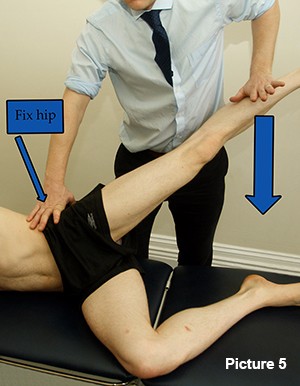
An excellent exercise to initiate glut medius strengthening is where you stand closely sideways to a wall, with the outermost foot parallel to the wall. The knee nearest the wall is bent up and placed against the wall. The standing knee is bent so that the kneecap is in line with the toes as you look down. The knee (not the foot) is then turned out until you can see most of the foot on the inside of the knee. Hold this position and press the knee against the wall hard into the wall so you are bracing yourself (see Picture 6 for example.) You will find that after a short moment you will feel the muscles in the outer hip/bum working. There will be other aches in the quads – nerve mind! You should aim to hold this position for 2 minutes and build up to 5 minutes, a couple of times a day.
These exercises are the basics and in a couple of weeks please retest yourself to monitor progress. A good running Physio should test these areas as a matter of course almost regardless of which injury you are complaining of because they are so fundamental. Assessment of the gluteals form part of the MOT service that you should consider if you are serious about your running.
